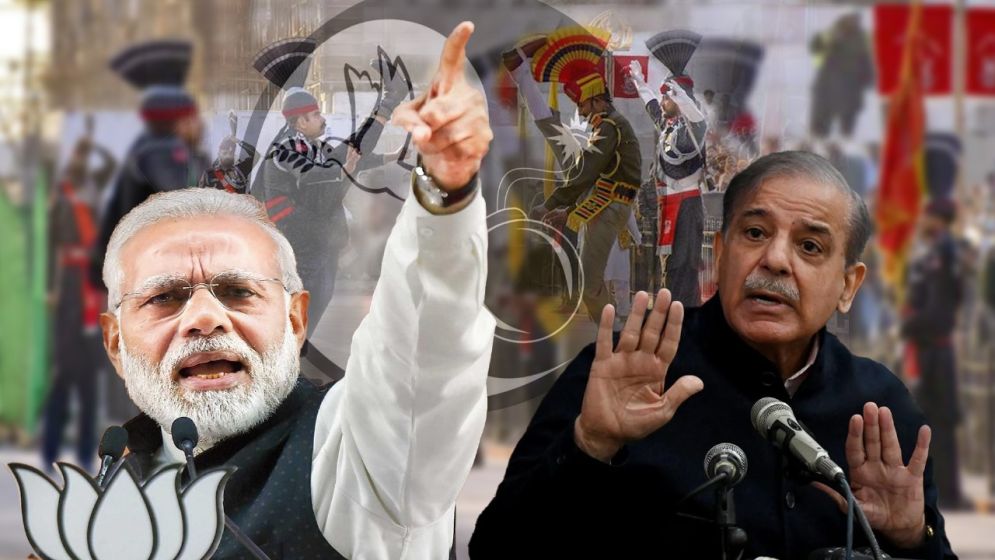India slowly builds its case for war against Pakistan, and the rest of South Asia stands still..

In the immediate aftermath of last week’s horrific massacre in Kashmir–an act of terrorism that left 26 civilians dead–Indian Prime Minister Narendra Modi has embarked on a frenetic campaign of diplomacy.
He has dialed more than a dozen world leaders and ushered foreign diplomats from over 100 missions through the corridors of South Block for briefings. But don’t be misled. This is not a mission of restraint. It’s a prelude to escalation.
Behind the closed doors and press briefings, four diplomatic officials familiar with New Delhi’s conversations have quietly confirmed the real objective: India is laying the groundwork for military action against Pakistan, as reported by a number of media.
Modi, without naming names, vowed in a Thursday speech to deliver a “fitting reply” and destroy terrorist safe havens–a familiar euphemism in the subcontinent for cross-border strikes.
The situation remains dangerously combustible. Over the past few nights, Indian and Pakistani forces have exchanged gunfire across the Line of Control, the volatile de facto border slicing through disputed Kashmir.
India has launched a sweeping crackdown in the region, arresting hundreds in an apparent bid to root out suspects, though no group has officially been identified as responsible for the attack.
Meanwhile, the Modi government has escalated pressure on Pakistan through other means: revoking water-sharing commitments, ordering Pakistani diplomats out, and harassing ordinary Pakistani visitors.
Pakistan has predictably responded with its own threats, suspending participation in bilateral treaties and signaling a readiness to challenge the status quo on the frontier.
It’s the kind of tit-for-tat spiral that South Asians know all too well–but this time, it feels even more volatile.
What’s most alarming, though, is not just the looming prospect of another India-Pakistan standoff. It’s the way the crisis is feeding a deeper, darker force: the steady normalization of anti-Muslim sentiment within India itself.
Kashmiri students across the country have been hounded, attacked, and forced to flee, victims not of geopolitics but of a toxic nationalism that now seems state-sanctioned.
As a Bangladeshi, watching from a country that has too often been caught in the slipstream of its larger neighbors’ antagonisms, the pattern is distressingly familiar.
Violence flares, blame is cast, and ordinary people– Muslims most of all– are left to bear the brunt of policies and politics driven more by optics than evidence.
India has yet to present concrete proof linking Pakistan to the Kashmir assault. Islamabad, for its part, has denied any involvement.

Toxic nationalism and jingoism
But in Modi’s India, facts seem increasingly irrelevant when nationalism can be weaponized. The real danger is not just what New Delhi may do next, but what it is becoming in the process.
South Asia cannot afford another war. Nor can it afford silence. Those of us who call this region home must speak up– not only to decry terrorism, but to reject the cynical militarism that exploits it.
In carefully orchestrated briefings with diplomats in New Delhi last week, Indian officials referenced past patterns of cross-border militancy and hinted at technical intelligence –facial recognition data among them– supposedly tying last week’s Kashmir massacre to operatives with links across the border. But what they didn’t provide was telling: proof.
For now, India's claims remain assertions wrapped in vague references to an ongoing investigation.
The absence of clear evidence, analysts suggest, leaves only two possibilities: either India is genuinely still piecing together the forensic puzzle, or it sees no need– not this time– to justify military action.
Either scenario is dangerous. The first speaks to impulsive statecraft; the second, to a worrying new confidence that India can act with impunity.
A military clash between India and Pakistan, both nuclear-armed, is never just a bilateral matter. It’s a potential regional catastrophe. Yet the global response to this perilous moment has been tepid at best.
Yes, Iran and Saudi Arabia have phoned it in, quite literally. The United Nations and European Union have issued the requisite calls for calm. But the power players who once might have leaned in–Washington, London, even Beijing– seem more distracted than disinterested.
In Delhi, this diplomatic fog is being interpreted not as indifference, but as permission.
As a South Asian watcher from Bangladesh, I’ve seen what unchecked regional power looks like– and the havoc it can wreak. India, emboldened by its growing economic heft and geopolitical clout, is no longer playing defense. It is increasingly unbothered by global opinion, and unhesitant in its willingness to use force as a tool of foreign policy.
The United States, under President Trump, has offered little more than rhetorical balance. Trump has touted his warm ties with both nations–a hollow claim if ever there was one– while signaling firm support for India’s “fight against terror.”
Yet, over three months into his term, the administration has not even appointed an ambassador to India. It’s hard to believe South Asia sits anywhere near the top of Washington’s foreign policy agenda.
Even if it did, history offers little comfort. As Daniel Markey of Johns Hopkins University notes, the U.S. response now mirrors its reaction to the last major Kashmir crisis in 2019– when a clearer case existed against Pakistan-based militants.
That incident, too, ended with Indian jets crossing into Pakistani airspace, and both sides flirting with war. The world blinked and moved on.
And now here we are again: a region inching toward conflagration, fueled by decades of distrust, nationalist rhetoric, and a brutal zero-sum logic. The tragedy in Kashmir was horrific. No doubt. And Justice must be pursued.
But when that pursuit is blurred with vengeance and carried on the back of shaky intelligence, it becomes something else entirely– a calculated escalation, not a moral imperative.

South Asian powder keg
If South Asia is to avoid the next war, the region must ask a difficult question: when does the search for justice become the performance of power? And who, if anyone, will still be listening when the answer comes too late?
In 2019, India launched air strikes inside Pakistan after a terrorist attack in Kashmir–a move that drew international concern only after the fact.
The Trump administration, then more preoccupied with optics than outcomes, applauded India’s assertiveness, applying pressure for restraint only after Indian jets had crossed the Line of Control and one was shot down in the ensuing dogfight.
The pilot’s capture– and the global embarrassment that followed–sent shockwaves through Delhi’s strategic community.
Now, the Modi government appears determined not to repeat that script. According to several security experts India may be looking to do something “spectacular” this time–a bold gesture meant to reassert control, dominate headlines, and avoid any perception of military failure.
In Pakistan, the response has been predictably symmetrical: any Indian strike, officials have vowed, will be met with greater force.
But this time, the foundation for conflict is shakier than ever. Unlike the 2019 attack, where responsibility was swiftly claimed by Jaish-e-Mohammed, last week’s massacre has been shrouded in ambiguity.
Even the number of attackers remains murky. A shadowy group calling itself The Resistance Front emerged online to claim responsibility, but Indian officials privately allege it’s a front for Lashkar-e-Taiba–the well-known Pakistan-based outfit long accused of orchestrating terror in Kashmir.
Lacking clear attribution, India has defaulted to the past– citing Pakistan’s long and well-documented history of support for terrorism in Kashmir to justify its military posture today.
But this backward-looking rationale has left the whole world uneasy. Do you really want to launch a military campaign against a nuclear-armed neighbor based on historical patterns?
That question lingers, unanswered, in the hush of international diplomacy.
Inside India, the pressure to respond is immense. Prime Minister Modi has established a precedent–surgical strikes in 2016, airstrikes in 2019– and walking it back now would be seen as political weakness.
There's also the matter of Kashmir’s image. Delhi has spent the past few years promoting the region as a newly normalized, tourist-friendly destination. A massacre like this exposes the fragility behind that narrative.
Still, some in India’s strategic elite, such as former national security adviser Shiv Shankar Menon, insist there’s no need to panic. “They’re both quite happy in a state of managed hostility,” he says– a statement as cynical as it is revealing. In other words, limited conflict has become the new status quo.
From where I sit in Dhaka, this “managed hostility” is a luxury South Asia cannot afford. Our region is home to a third of humanity, yet its two most powerful states remain locked in a perpetual performance of brinkmanship.
Escalation is no longer just a possibility; it is a pattern. And if we keep normalizing this cycle–war talk one week, war games the next– it’s only a matter of time before miscalculation replaces choreography.
—
Md Sazzad Amin is an entrepreneur and an armchair political analyst

